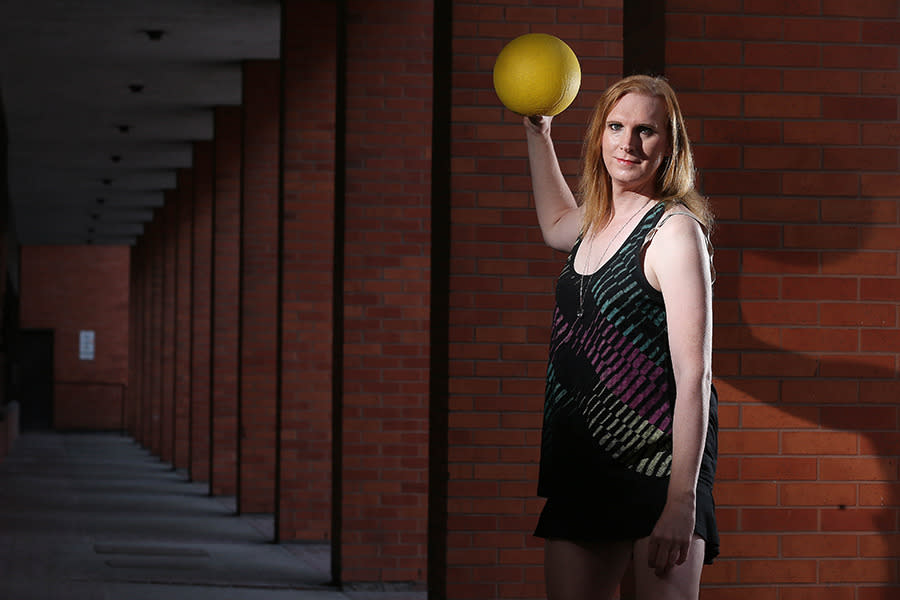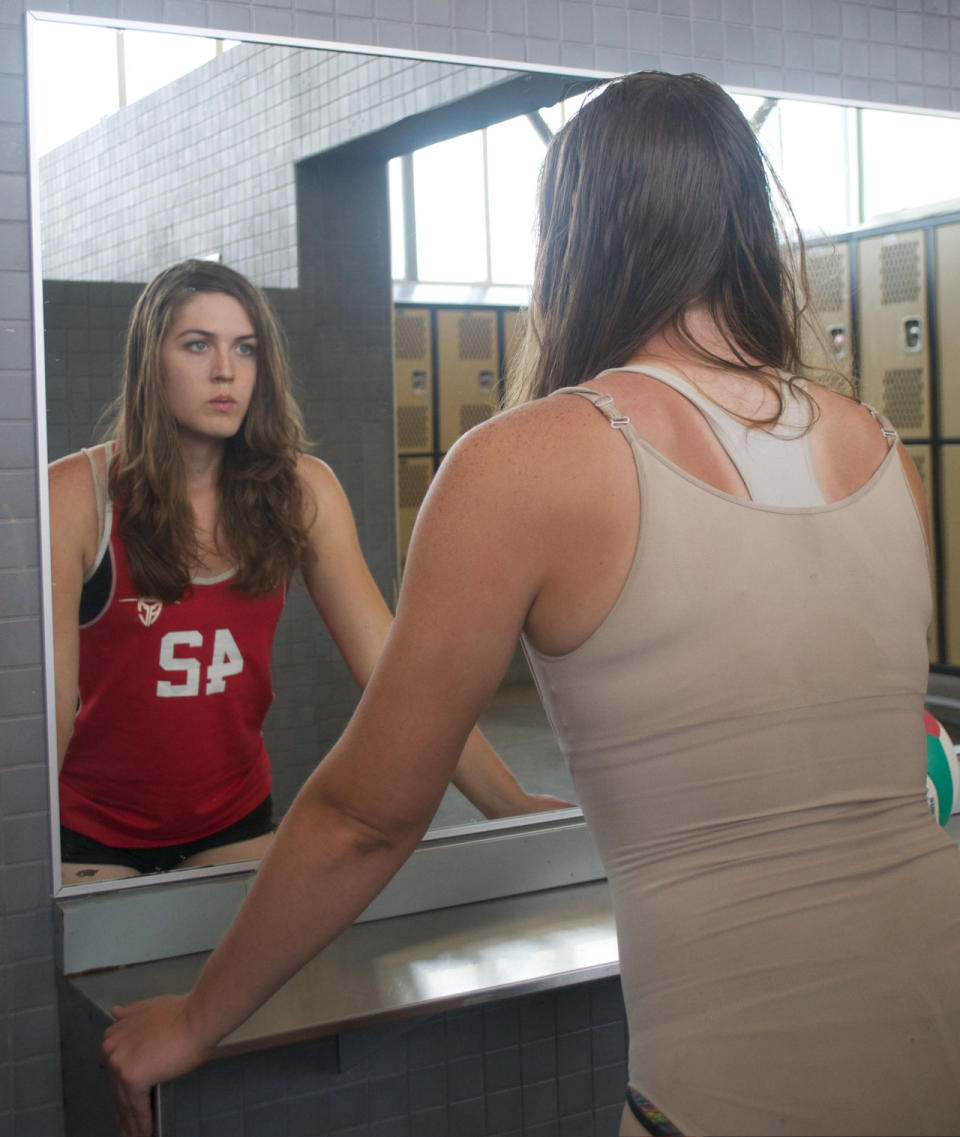Transgender Athletes on Embracing Their Inner and Outer Beauty
This is an exciting time for transgender athletes.
Earlier this year, the International Olympics Committee revised its guidelines to allow transgender athletes to compete in the Games in their preferred gender and without having to undergo gender reassignment surgery.
The decision — which was based in large part on input from preeminent triathlete Chris Mosier, the first openly transgender athlete on a U.S. national team to be featured in a Nike ad — is much welcome and long overdue for both professional and amateur transgender athletes.
Related: Transgender Woman Becomes the First to Land the Cover of Women’s Running
Gender reassignment surgery (a process through which a person’s genitals are surgically removed or reshaped into a penis or vagina) is complex, painful, and irreversible, but surgery aside, even the hormone therapy that many transgender people choose to undergo can very quickly do a serious number on the body and affect athletic abilities.
“Someone on testosterone will rapidly feel a newfound strength, and they’ll want to lift very heavy weights quickly, but this can result in injury if not properly managed,” says Nathalie Huerta, the founder of LGBT gym the Perfect Sidekick in Oakland, Calif. “Someone on estrogen is going to start gaining weight quickly and carry more body weight than they’re used to, so they’ll want to do a ton more cardio, which can also negatively impact them if it’s not properly managed.”
Getting used to the look and feel of the body as it changes is also a challenge for transgender athletes.
Related: The Complex Relationship Between Transgender Women and Makeup
“Stepping into the gym or going out to do sports is a scary thing for a trans person — you feel like everyone is looking at you,” says Carmen Carrera, a transgender model and activist. “Feeling comfortable with your body as you go through a transition is not easy, and honestly, as a trans person on hormones or after surgery, you just don’t really know what your results will be, how you’ll finally look. Managing all of that is a challenge.”
Carrera’s line of athletic clothing is specifically designed for trans athletes who want to work out and continue their sport without drawing attention to themselves. The functional, minimalist line is perfect for athletics and stylish enough to be worn throughout the day as well, she says.
But even if transition is challenging, it goes without saying that discovering a new body — what it can do, what it can wear — and finally living in one’s true gender is an exciting process. Yahoo Beauty spoke to three transgender athletes who shared their journeys in sports and style and how the interplay of both inspires newfound confidence in athletics and everyday life.
Savannah Burton, dodgeball

Canadian dodgeball player Savannah Burton gets real about the struggles that transgender athletes face. (Photo: Getty Images)
One of the toughest and most challenging things Savannah Burton has ever had to do, back in 2014, was return to dodgeball (a sport she’s played since 2007) about 16 months after embarking on her transition process.
Even though it was disheartening to feel how much she’d lost in terms of strength and endurance and to know she had to work really hard to recover her past ability, just being herself after years of insecurity and unhappiness was an enormous relief.
And in due course, that comfort parlayed itself back to Burton’s sport.
In January 2015, she tried out for Canada’s national women’s dodgeball team and was one of eight people chosen.
Burton is most comfortable wearing leggings and T-shirts when she’s doing a sport.
“There are always lots of eyes on you when you’re a trans woman playing sport, and many of us just want to blend in and not stand out,” she says. “I am 6 feet 3 inches [tall] as it is, so I stand out anyway, and that’s why I don’t want to wear anything too flashy that might make me stand out more.”
Her one exception: a T-shirt with an eye-catching design of a phoenix rising from the ashes.
“It’s symbolic of who I am and my journey in life,” Burton says.
Her increased confidence in sports and in life has encouraged her to further her interest in acting. Burton has been in Killjoys, a Syfy network series, and is now actively auditioning for more parts.
JJ (Janssen) Liston, long-distance running

“I want to come across as responsible and professional and not be questioned,” says long-distance runner JJ Liston. (Photo: JJ Liston)
“I have always had a strong sense of self and a strong sense of self-confidence,” says JJ Liston, a competitive long-distance runner and IT sales professional in San Francisco.
Whether it was wearing a jogging bra for the first time or adjusting to the slower running speed that is the almost immediate consequence of estrogen supplements, Liston has willingly embraced all the physical changes she has gone through since she began transitioning. She’s thrilled to find herself gaining weight in her hips, an area she had never gained weight in before, and she’s even figured out how to exit a swimming pool so that no one gawks at her (Liston has chosen not to undergo gender reassignment surgery).
“For any trans woman, the locker room is the most stressful place to be,” Liston says. “I had to put my fear aside when I chose to go to my local pool with local people there because I wanted it so bad and I had to depend on my open eyes and my high self-esteem to get me through with grace.”
Liston has been consistently registering for and comfortably running races of all distances in the U.S. and overseas as a woman (most recently, she competed in the 52K Broken Arrow Skyrace in Squaw Valley, Calif.), and she trains several times a week.
“I’m blessed with the kind of body that presents well as a woman, and my shape fits most athletic brands very well,” Liston says.
Now her greater challenge lies in the professional world, where “I want to come across as responsible and professional and not be questioned,” she says. “I’m very conscious of the fact that the industry I’m in is heavily male-dominated, and as a woman, I do need to dress up more than my male counterparts but also in a polished and conservative way so I’m taken seriously.”
Chloe Psyche Anderson, volleyball

Focused and determined, volleyball player Chloe Psyche Anderson is prepared for what lies ahead as she plays in the NCAA Division III. (Photo: Claire Ortiz)
For as far back as she can recall, Chloe Psyche Anderson had just one wish: to be a girl.
Not only has that dream now come true, but in a matter of days the athletic teen will be playing her chosen sport — volleyball — for UC Santa Cruz’s NCAA Division III women’s team.
“I never thought I would make it onto a four-year team,” says Anderson, who in the recent past played on a community college team. “I thought I was too old, and at 24, when a lot of my teammates are aged 17 and 18, it will be a challenge for me.”
It’s a challenge, though, that she’s up for and confident of handling. Because even if the road to get to where she is was long and, at times, personally and athletically painful, Anderson is in a great spot right now, physically and otherwise.
Anderson — who’s very now comfortable in short shorts, tank tops, and other sporty attire — has decided against going forward with gender reassignment surgery.
“I used to feel that transition was a series of steps that needed to be completed, but I’ve sat with friends and watched them recover after surgery, and the more I saw their before-and-after reactions, I don’t feel that surgery is the end of things,” she says.
Let’s keep in touch! Follow Yahoo Beauty on Facebook, Twitter, Instagram, and Pinterest.
